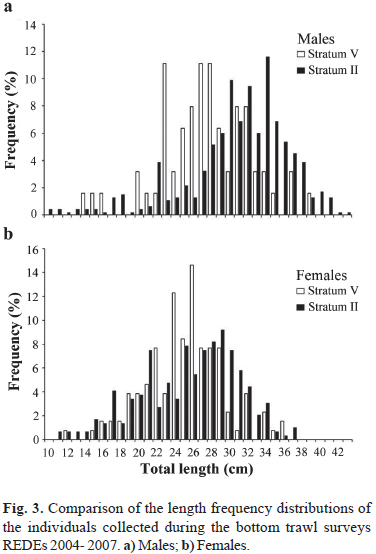The Electric ray Discopyge tschudii is distributed in the Southwest Atlantic from southern Brazil to southern Argentina and in the Southeast Pacific from Peru to southern Chile. The main threat to this species is fishing. Discopyge tschudii is noncommercial and individuals caught are discarded on board. The present study analyzes the distribution and the morphological and reproductive characteristics of this ray in San Matías Gulf (SMG), Argentina. A total of 1087 individuals were analyzed. The species presented an aggregate distribution, with the main concentrations in the northern and eastern areas of SMG, at depths below 100 m. Males ranged from 9 to 43 cm and females from 11 to 38 cm. The species presented sexual dimorphism. Males were larger and heavier than females and also matured at larger sizes. Size at 50% of maturity was estimated at 30 cm for males and 21 cm for females. A total of 199 embryos were sampled and the proportion of sexes showed no significant differences from the expected 1:1. The number of embryos per female varied from 1 to 12. The most frequent values were 2 and 5. Length at birth was estimated at 82.17 ± 3.87 mm. Based on our findings, we hypothesize that the electric ray D. tschudii completes its reproductive cycle in SMG.
Apron ray; Narcinidae; Southwest Atlantic; Torpedinoidei












